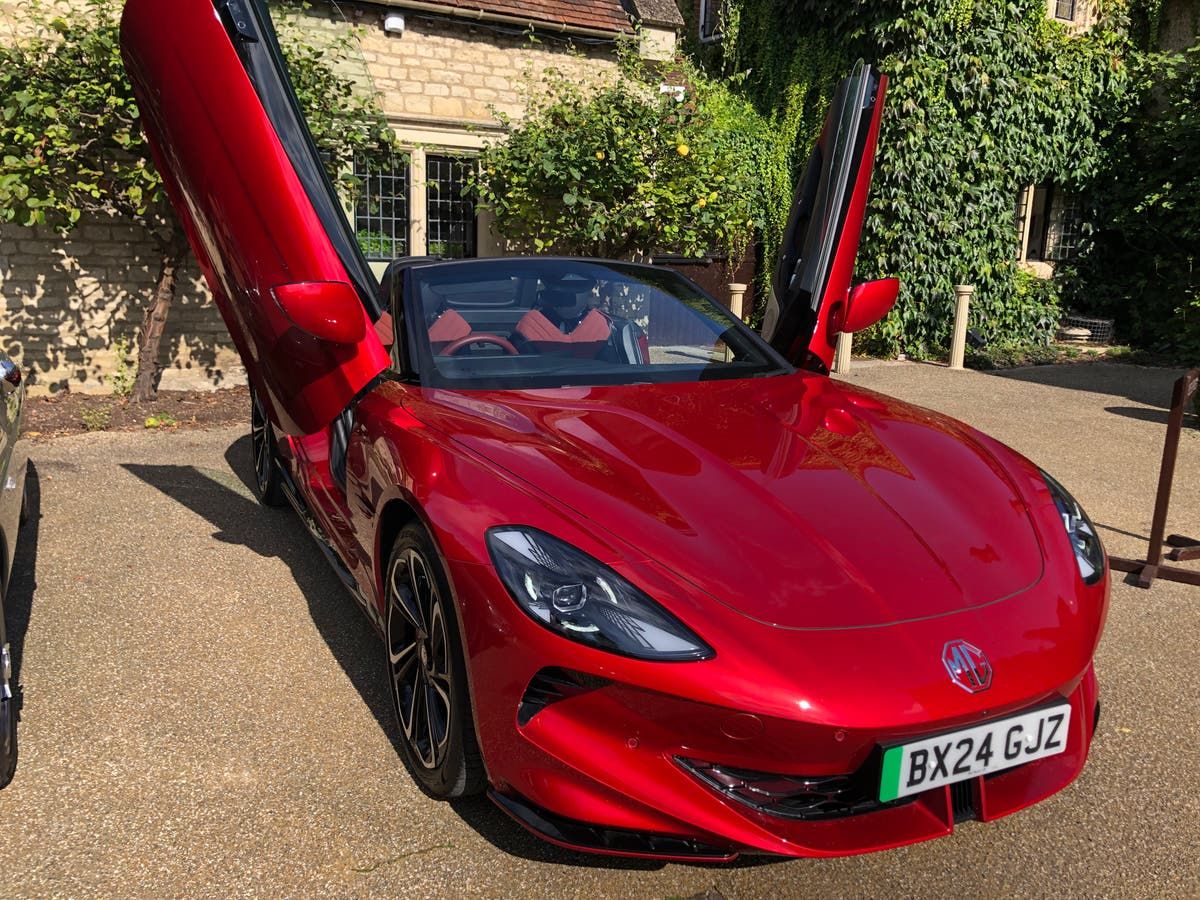Your support helps us tell the story.
My recent work focusing on Latino voters in Arizona has shown me how crucial independent journalism is to giving voice to underrepresented communities.
Your support is what allows us to tell these stories and draw attention to issues that are often overlooked. Without your contribution, these voices may not be heard.
Every dollar you donate helps us continue to shed light on these critical issues in the run-up to the election and beyond.
Eric Garcia
Washington Office Chief
Oh—Eh, what’s that then? —Yes, I was unplugging the new all-electric MG Cyberster from its charging point. Yes, I was in a multi-storey car park. Yes, it was a couple of lads in a Ford Fiesta. Yes, there was no escape route.
Fortunately, they weren't curious enough to get an answer, although I'd like to think that, like many others who approached me in my sleek cyber-red roadster, they would appreciate the car for what it is: a stunning technological and aesthetic achievement.
A historic car, too, because – wow! – this is nothing less than the rebirth of the MG sports car.

It's been a long time since we've seen a new MG sports car – the MG F was really the last, launched in 1995, unless you count the short-lived MG XPower SV of 2004, a rebodied Qvale Mangusta and, very much, the automotive curiosity of the 2000s.
It's been a long time coming anyway, and many of us assumed the MG sports car was dead, given that the brand is now owned by SAIC Motor, and its hatchbacks, estates and SUVs are all built in China, and mostly with electric powertrains.
So the Cyberster is a surprise, and even has a link to the UK because much of the design work was done here. That's the best we can hope for in the post-Brexit world.

It's a stylish revival. Though it dwarfs any traditional MG roadster, the Cyberster is well-proportioned, with a purposeful stance and rather classical lines.
To be precise, it measures 4.6 metres long by 1.9 metres wide – roughly the size of a contemporary Porsche 911 – and if you couldn't see the badging, you might assume (especially given the strong styling lines running down the long bonnet) that this was a new Jaguar that was long overdue.
It also vaguely reminds us of a BMW Z4 or some Italian model. Perhaps we should conclude that it is extremely attractive on its own and would not go unnoticed if parked next to, say, a classic and elegant MG B.

It also does party tricks, and that's important in a car that's supposed to be fun. It has, most spectacularly, electric scissor doors that open vertically thanks to a piston in the door frame. They may be mediocre, but overall I don't think so, because they have practical justifications…
Being so wide, it would be very easy to hit a neighbouring vehicle in a parking lot or at a charging station; and they also make entry and exit much easier, an important factor for the older demographic, which will be the main customer base for this model.

In GT guise, with dual motors and effortless supercar performance (0-60mph in 3.2 seconds), it costs around £60,000, and the slightly slower single-motor Trophy is available at a £5000 discount.
It only has two seats, no frunk, negligible luggage space (two overnight bags, say) and you might think it's not a great car for the money, but it compares well with its fossil-fuelled rivals and obviously beats them on refinement.
THE SPECIFICATION
MG Cyberster GT
Price:£59,995 (as tested, range starts at £55,995)
Propulsion:Dual electric motor, powered by 74.4 kWh battery
Power (HP):503
Maximum speed (mph):120
0-60 (seconds):3.2
Economy (Wh/mile):298
Range (miles): about 265
CO2 emissions: 0
It's a genuine sports car, halfway between an old-style roadster and a GT cruiser, and it even has a “launch mode”, which I didn't try because the screen tells me it's only for closed roads.
It's still pretty enthusiastic, with little variation between its Sport and Comfort settings. You can activate an electric hum or a bit of engine noise, but silence suits it better – more authentic, as an MG should be.

I also liked the rear indicators, each with an arrow indicating the direction in which you were travelling. The last time I saw this detail was on the back of a Routemaster bus and I loved it too.
The triple screens on the dash are a little small, and some of the key data is obscured by the steering wheel (for example, the speed set for the adaptive cruise control). The seats, while comfortable, could also be a little more “hugging,” as if they needed to manage G-forces.

As for range, the Cyberster is unusually sensitive to how you drive it, even for an electric car, and much depends on the ambient temperature.
In my experience, on a hot day on the motorway you can reasonably achieve 200 miles on a single charge, and it also recharges fairly quickly from a commercial charger, such as those found at some petrol stations these days. It charges at a rate of about half an hour to take you from range anxiety to confidence (30 miles to 320 miles indicative range).
It's also surprisingly fuel efficient – about 10 percent worse than a Kia Niro, for example.

MG has been reborn and is currently in a league of its own. Porsche, Polestar and Tesla are all promising fully electric sports cars, but for the moment its only technical rival is the much softer and much more expensive Maserati GranCabrio (around €200,000).

In other words, it's a “proper”, eco-friendly and (relatively) affordable MG.
In fact, it was born to mark the centenary of the former Morris Garages company founded by Cecil Kimber, a fact reflected in a discreet footnote on a sticker placed on the lower rear flank. The wait was well worth it.












